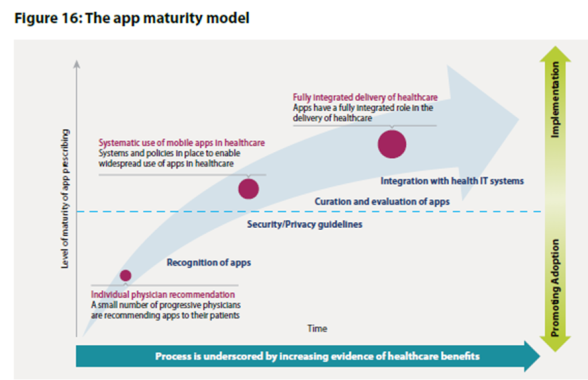Happy New Year! 2013 has been an interesting year in healthcare with 2014 promising many more exciting developments. A few of the biggest stories from 2013 include:
- Healthcare.gov – the politics, the drama, and the missteps
- Healthcare transparency and costs – new companies, new revelations, and an entire Time magazine focused on it
- Healthcare engagement – ongoing focus on how to get consumers to engage
- mHealth and QuantifiedSelf – apps and devices proliferate
- Investment – a huge jump in VC and angel funding for healthcare
- ACOs – do they work or not
- Big Data – so much data…so many opportunities
Here’s my predictions for 2014:
- Transparency – The race to bring cost data to the forefront of the consumer mindset will move from a radical concept to an expectation. With increased out-of-pocket costs and HDHPs, consumers will expect access and information to cost data. They will look for systems that can predict what they need and push data to them in a timely fashion using location based services and predictive algorithms.
- Exchanges – With big companies trying the private exchanges and moving their employees to the federal exchange, we’ll see the market holding its breadth to see what happens. If this drives success on both sides of the equation – employers and payers, you can expect a large jump in this direction later in the year.
- Mobile – The traditional member website will continue to die a slow death without mobile optimization in place. More and more consumers will access the healthcare system through a smart phone or device like an iPad. This will drive healthcare companies to figure out how to embrace user design and member experience in new ways as they strive to provide the sustainable app that consumers use more than a few times.
- Providers – Providers will continue to cautiously embrace pay-for-performance, value-based healthcare, and models like ACOs and PCMHs. They will want them to work, but they will continue to look for the Tipping Point in which their overall panel is part of these programs. Providers will also begin to modify their workflows using technology based on Meaningful Use and the ubiquity of technology.
- Engagement – Consumer engagement in healthcare will continue to be the elusive Holy Grail. Companies will try behavioral economics, incentives, and mass personalization to try and get consumers to understand healthcare and take actions to improve their health. There will be more shifting to include caregivers and embrace social media (e.g., Facebook) and peer-to-peer networks. We will start to see documented case studies and results in terms of improved outcomes.
- Devices – While 2013 was the year of device proliferation, we will see the number of people (early adopters and QuantifiedSelf groupies) maxing out. I expect some further consolidation and a dip in adoption rate as we move into the period of disillusionment. Devices will be less about a standalone solution and look at how they integrate with the smart phone and existing systems (at work and home). Like smart pills and smart clothes, this will lead to increased data and integration into daily life. This will require collaboration with providers and employers to figure out how to come through this period.
- Value-based – CMS will continue to be a big driver in pushing new payment models around healthcare as they struggle to figure out how to slow the tidal wave of costs coming in Medicare and Medicaid. This will meet up with some of the progress in the commercial space with ACO and PCMH models leading to an evolving path in terms of how drive value. This won’t be the breakthrough year, but we’ll see meaningful progress.
- Investments – I don’t see any slowdown in healthcare investments. Our health issues aren’t going away in the US or abroad. China is just emerging with a long list of health issues and technology is creating new solutions in 3rd World countries.
- Pills Plus – With pharma struggling with how to reinvent itself, they are going to look at new solutions like Merck is doing with Vree Health. This will cause them to look at many of these trends and how they wrap services, technology, and incentives around their medications.
- Specialty Care – Specialty pharmacy will continue to be a big growth driver with novel innovations coming down the pipe. But, these pharmacies will realize that they can’t work in a vacuum. They have to do a better job at integrating care management into their services and partnering with Case Management companies to holistically treat the patient.
- Metabolic Syndrome – The overall global issues of obesity and diabetes will become a huge weight around the shoulders of the healthcare system. While the focus will continue to be on the complex cases requiring massive dollars, the majority of people will be struggling with a chronic disease. Metabolic Syndrome will become a big focus for payers, employers, and health services companies as they try to find ways to prevent further complications.
- Prevention – While I don’t expect a huge shift here, I think we’ll start to hear more voices on the perimeter yelling about why we only spend 5% of our dollars on prevention. They’ll point out other models outside the US spending more with better outcomes. Health Reform will begin to enable some change here, but it will be slow.
- Community Based Care – With more people coming back into the healthcare system with Health Reform, there will be a greater need for location based access to healthcare. This will involve clinics but will be much broader. Companies will need to look at how they embrace community resources like churches to engage the disengaged and poor who don’t trust the system and have limited access to the traditional channels.

 December 31, 2013
December 31, 2013 











